Potential of Artificial Intelligence-Based Techniques for Rainfall Forecasting in Thailand: A Comprehensive Review
Abstract
:1. Introduction
2. Materials and Methods
2.1. Research Questions (RQs)
2.2. Keywords Selection
2.3. Domains Selection
2.4. Defining Selection Conditions
2.5. Inclusion Conditions (ICs)
2.6. Exclusion Conditions (ECs)
2.7. Literature Extraction
2.8. Quality Evaluation
3. Developments in Rainfall Forecasting Methods
4. Application of AI Techniques in Rainfall Forecasting (Worldwide)
4.1. Machine Learning
4.1.1. Support Vector Machines (SVMs)
4.1.2. Decision Trees (DTs)
4.1.3. Random Forest (RF)
4.1.4. Artificial Neural Networks (ANNs)
4.1.5. K-Nearest Neighbors
4.1.6. Bayesian Methods
4.2. Deep Learning
4.2.1. Convolutional Neural Networks (CNNs)
4.2.2. Feed-Forward Neural Networks (FFNNs)
4.2.3. Recurrent Neural Networks (RNNs)
4.2.4. Deep Neural Networks (DNNs)
4.2.5. Wavelet Neural Networks (WNNs)
5. Overview of Artificial Intelligence Techniques in Thailand
| AITs | Input Data | Duration of Data | Source of Data | Forecast Type | Territory | Evaluation Criteria | Effectiveness of Study | Reference |
|---|---|---|---|---|---|---|---|---|
| Adaptive RBFNN with genetic algorithm | Monthly Rainfall Dataset | 14 Rainfall stations data for 30 years (1971–2000) | TMD | Monthly Rainfall Prediction | Thailand | Sum square error (SSE) | Genetic Algorithms to optimize the adaptive RBF NN represents a very good model for the prediction of rainfall. | [78] |
| ANN and SVM | Rainfall, wind, cloud cover, relative humidity, and Sunshine data | Daily Weather station dataset and GPCM + RADAR (2004–2006) | Chalermprakiat Royal Rain Making Research Center, TMD and GPCM + RADAR | Short-Term Rain Forecasting | Northeastern Part of Thailand | RMSE | The ANN and SVM models demonstrated an overall accuracy of 68.15% and 69.10%, respectively, in predicting outcomes on the same day. | [80]. |
| ANNs combined with wavelet decomposition | Daily rainfall data | Rainfall data from the monitoring Stations (1995–2006) | TMD and Royal Irrigation Department | Daily Rainfall Prediction | Five provinces of Thailand | RMSE and R2 | The network under consideration can predict daily rainfall up to 4 days ahead, with a precision of R2 = 0.8819 and an RMSE value of 4.6912 mm. | [81]. |
| ARIMA and Holt-Winter models | Monthly rainfall data | Fifteen stations from April 2005 to March 2013. | Hydrology and Water Management Center for Lower Northeastern Region | Monthly Rainfall Forecasting | Nakhon Ratchasima Province, Thailand | Mean Absolute Percentage Error (MAPE), Mean Square Error (MSE), and Mean Absolute Error (MAE) | The ARIMA Model (1,0,1)(1,0,1)12 yielded the optimal forecasting performance | [82]. |
| Back Propagation NN and Time-Lagged Back Propagation NN with gamma memory | Rainfall and flow dataset | Rainy and winter season daily dataset (2012–2015) and | Not Available | Forecasting of Rainfall for flood prediction | Yom and Nan Rivers in Thailand | RMSE, Coefficient of Correlation, R, and Coefficient of Determination | Time-Lagged Back Propagation NN performs better than the other models during the winter season | [83] |
| DNN based Models | Monthly rainfall Data and Large Atmospheric Variables (LAVs) | Rainfall station data and LAVs from 1991 to 2016 | Pluak Deang station and Earth System Research Laboratory (ESRL) | Monthly rainfall forecasting | The eastern region of Thailand | Stochastic efficiency (%) | DNN can forecast monthly rainfall for a period ranging from one to twelve months in advance | [84] |
| DNN based model | Monthly rainfall data and LAVs | Rainfall station data and Large Atmospheric Variables from 1991 to 2016 | TMD and Earth System Research Laboratory (ESRL) | Monthly Rainfall Forecasting | Khlong Yai river basin, Thailand | Stochastic efficiency (%) | The DNN monthly rainfall forecast model has demonstrated satisfactory accuracy, with a forecast precision of approximately 70% for a forecast horizon of up to three months. | [85]. |
| Classification and Regression Tree (CART), MLP, RF, and SVM. | 5-min time interval rain gauge dataset | 90 min of rain gauge data from 130 stations | Department of Drainage and Sewage and Bangkok Metropolitan Administration | Forecasting of rainfall Nowcasting | Bangkok Metropolitan Area, Thailand | Recall, precision, and F1 score | F1 performance was average for CART, MLP, RF, and SVM, with values of 0.69, 0.59, 0.73, and 0.63, respectively. | [86]. |
| Mann-Kendall test and PCA | Daily rainfall data and Global Surface Temperature | Daily rainfall data (1955–2019) and Global Surface Temperature (1951–1980) | TMD and Goddard Institute for Space Studies (GISS) and Global Historical Climatology Network (GHCN), the Scientific Committee on Antarctic Research (SCAR), the Hadley Centre Global Sea Ice and Sea Surface Temperature (HadISST), and the Optimum Interpolation Sea Surface Temperature(OISST) | Changes in daily rainfall intensity | Thailand | N/A | The study’s findings provide scientific evidence to endorse efficient water management in the agricultural domain and to cope with the consequences of climate-induced extremes and calamities. | [87] |
| CNNs, ConvLSTM, and ConvGRUs | ERA5 hourly data and Reanalysis of the global climate and weather observation data set from ECMWF | Hourly Dataset | ERA5 and ECMWF | Spatial-Temporal Rainfall Nowcasting | Thailand | Root mean squared errors (RMAEs), along with false negative (FN) and F1 score | Overall, all three models performed well in three different conditions. | [89] |
6. Results and Discussion
7. Conclusions
Author Contributions
Funding
Data Availability Statement
Acknowledgments
Conflicts of Interest
Abbreviations
| AITs | Artificial Intelligence Techniques |
| AI | Artificial Intelligence |
| ML | Machine Learning |
| ANNs | Artificial Neural Networks |
| DL | Deep Learning |
| RQs | Research Questions |
| ICs | Inclusion Conditions |
| ECs | Exclusion Conditions |
| SVM | Support Vector Machine |
| FL | Fuzzy Logic |
| DT | Decision Trees |
| RFs | Random Forests |
| KNN | K-Nearest Neighbors |
| FFNN | Feed-Forward Neural Networks |
| WNNs | Wavelet Neural Networks |
| DNNs | Deep Neural Networks |
| CNNs | Convolutional Neural Networks |
| RNNs | Recurrent Neural Networks |
| SVD, | Singular Value Decomposition |
| PCA | Principal Component Analysis |
| ICA | Independent Component Analysis |
| SVR | Support Vector Regression |
| MKSVR-SARIMA | Multi-Kernel SVR Seasonal Autoregressive Integrated Moving Average |
| SVM-FA | SVM With A Firefly Algorithm |
| RMSE | Root Means Square Error |
| NSE | Nash-Sutcliffe Efficiency |
| SMO | Sequential Minimal Optimization |
| RC | Random Committee |
| DA | Dagging |
| AR | Additive Regression |
| LDA | Linear Discriminant Analysis |
| LS-SVR | Least Square Support Vector Regression |
| ROC | Receiver Operating Characteristic Curve |
| RF | Radiofrequency |
| MRA | Multiple Regression Analysis |
| APST | Approximation and Prediction of Stock Time-Series |
| BNN | Bayesian Neural Network |
| HBV | Hydrologiska Byråns Vattenbalansavdelning |
| HPD | Highest Posterior Density |
| MSE | Mean Squared Error |
| MLPNN | Multilayer Perceptron Neural Network |
| SCG | Sigmoid Transfer Function |
| MAE | Mean Absolute Error |
| LSTM | Long Short-Term Memory |
| CRNN | Convolutional Recurrent Neural Network |
| ARIMA | Autoregressive Integrated Moving Average |
| SNNs | Shallow Neural Networks |
| SE | Stochastic Efficiency |
| LAV | Large-Scale Atmospheric Variables |
| DWT | Discrete Wavelet Transform |
| FFBP | Feed Forward Back Propagation |
| NWP | Numerical Weather Prediction |
| RBFNN | Radial Basis Feed Forward Neural Network |
| TMD | Thai Metrological Department |
| MRDNN | Monthly Rainfall Deep Neural Network |
| CART | Classification and Regression Tree |
| GRU | Gated Recurrent Unit |
| CD-VAEs | Conditional-Decoder Variational Autoencoders |
| ECMWF | European Centre for Medium-Range Weather Forecasts |
| Cond-O | Conditional Variational Autoencoder with Ordinary Features |
| Cond-H | Variational Autoencoder with Hierarchical Features |
| Cond-Z | Conditional Variational Autoencoder with Latent Space Features |
| SSE | Sum Square Error |
| MAPE | Mean Absolute Percentage Error |
| MAE | Mean Absolute Error |
| GPCM | General Purpose Chip Select Machine |
| GISS | Goddard Institute for Space Studies |
| GHCN | Global Historical Climatology Network |
| SCAR | Scientific Committee on Antarctic Research |
| HadISST | Hadley Centre Global Sea Ice and Sea Surface Temperature |
| OISST | Optimum Interpolation Sea Surface Temperature |
| ECMWF | European Centre for Medium-Range Weather Forecasts |
| R2 | Coefficient of Determination |
References
- Parmar, A.; Mistree, K.; Sompura, M. Machine learning techniques for rainfall prediction: A review. In Proceedings of the International Conference on Innovations in information Embedded and Communication Systems, Coimbatore, India, 17–18 March 2017. [Google Scholar]
- Davolio, S.; Miglietta, M.; Diomede, T.; Marsigli, C.; Morgillo, A.; Moscatello, A.J.N.H.; Sciences, E.S. A meteo-hydrological prediction system based on a multi-model approach for precipitation forecasting. Nat. Hazards Earth Syst. Sci. 2008, 8, 143–159. [Google Scholar] [CrossRef]
- Zaw, W.T.; Naing, T.T. Empirical statistical modeling of rainfall prediction over Myanmar. World Acad. Sci. Eng. Technol. 2008, 2, 500–504. [Google Scholar]
- Poornima, S.; Pushpalatha, M. Prediction of rainfall using intensified LSTM based recurrent neural network with weighted linear units. Atmosphere 2019, 10, 668. [Google Scholar] [CrossRef]
- Adaryani, F.R.; Mousavi, S.J.; Jafari, F. Short-term rainfall forecasting using machine learning-based approaches of PSO-SVR, LSTM and CNN. J. Hydrol. 2022, 614, 128463. [Google Scholar] [CrossRef]
- Ridwan, W.M.; Sapitang, M.; Aziz, A.; Kushiar, K.F.; Ahmed, A.N.; El-Shafie, A. Rainfall forecasting model using machine learning methods: Case study Terengganu, Malaysia. Ain Shams Eng. J. 2021, 12, 1651–1663. [Google Scholar] [CrossRef]
- Liu, Z.; Han, X.-H. Deep self-supervised hyperspectral image reconstruction. ACM Trans. Multimed. Comput. Commun. Appl. (TOMM) 2022, 18, 1–20. [Google Scholar] [CrossRef]
- Aftab, S.; Ahmad, M.; Hameed, N.; Bashir, M.S.; Ali, I.; Nawaz, Z. Rainfall prediction using data mining techniques: A systematic literature review. Int. J. Adv. Comput. Sci. Appl. 2018, 9, 143–150. [Google Scholar] [CrossRef]
- Aftab, S.; Ahmad, M.; Hameed, N.; Bashir, M.S.; Ali, I.; Nawaz, Z. Rainfall prediction in Lahore City using data mining techniques. Int. J. Adv. Comput. Sci. Appl. 2018, 9, 254–260. [Google Scholar] [CrossRef]
- Yadav, A.K.; Chandola, V.K.; Singh, A.; Singh, B.P. Rainfall-runoff modelling using artificial neural networks (ANNs) model. Int. J. Curr. Microbiol. Appl. Sci. 2020, 9, 127–135. [Google Scholar] [CrossRef]
- Abbot, J.; Marohasy, J. Forecasting of medium-term rainfall using Artificial Neural Networks: Case studies from Eastern Australia. Eng. Math. Top. Rainfall 2018, 33. [Google Scholar] [CrossRef]
- Janarthanan, R.; Balamurali, R.; Annapoorani, A.; Vimala, V. Prediction of rainfall using fuzzy logic. Mater. Today Proc. 2021, 37, 959–963. [Google Scholar] [CrossRef]
- French, M.N.; Krajewski, W.F.; Cuykendall, R.R. Rainfall forecasting in space and time using a neural network. J. Hydrol. 1992, 137, 1–31. [Google Scholar] [CrossRef]
- Shrivastava, G.; Karmakar, S.; Kowar, M.K.; Guhathakurta, P. Application of artificial neural networks in weather forecasting: A comprehensive literature review. Int. J. Comput. Appl. 2012, 51, 17–29. [Google Scholar]
- Ayuba, P.; Abdullateef, M. Comparative analysis of the performance of artificial neural networks (ANNs) and autoregressive integrated moving average (ARIMA) models on rainfall forecasting. Sci. World J. 2018, 13, 100–105. [Google Scholar]
- Esteves, J.T.; de Souza Rolim, G.; Ferraudo, A.S. Rainfall prediction methodology with binary multilayer perceptron neural networks. Clim. Dyn. 2019, 52, 2319–2331. [Google Scholar] [CrossRef]
- Chokngamwong, R.; Chiu, L. TRMM and Thailand daily gauge rainfall comparison. In Proceedings of the Reprints, 20th Conference on Hydrology, Atlanta, GA, USA, 27 January 2006. [Google Scholar]
- Sangkhaphan, S.; Shu, Y. Impact of rainfall on agricultural growth in Thailand: Evidence in farming and fishing activities. J. Econ. Sustain. Dev. 2019, 10, 162–174. [Google Scholar]
- Mengist, W.; Soromessa, T.; Legese, G. Method for conducting systematic literature review and meta-analysis for environmental science research. MethodsX 2020, 7, 100777. [Google Scholar] [CrossRef]
- Ashok, S.P.; Pekkat, S. A systematic quantitative review on the performance of some of the recent short-term rainfall forecasting techniques. J. Water Clim. Chang. 2022, 13, 3004–3029. [Google Scholar] [CrossRef]
- Bewoor, L.A.; Bewoor, A.; Kumar, R. Artificial intelligence for weather forecasting. In Artificial Intelligence; CRC Press: Boca Raton, FL, USA, 2021; pp. 231–239. [Google Scholar]
- Al-Qammaz, A.; Darabkh, K.A.; Abualigah, L.; Khasawneh, A.M.; Zinonos, Z. An ai based irrigation and weather forecasting system utilizing lorawan and cloud computing technologies. In Proceedings of the 2021 IEEE Conference of Russian Young Researchers in Electrical and Electronic Engineering (ElConRus), St. Petersburg, Russia, 26–29 January 2021; pp. 443–448. [Google Scholar]
- Hernández, E.; Sanchez-Anguix, V.; Julian, V.; Palanca, J.; Duque, N. Rainfall prediction: A deep learning approach. In Proceedings of the Hybrid Artificial Intelligent Systems: 11th International Conference, HAIS 2016, Seville, Spain, 18–20 April 2016; pp. 151–162. [Google Scholar]
- Waqas, M.; Shoaib, M.; Saifullah, M.; Naseem, A.; Hashim, S.; Ehsan, F.; Ali, I.; Khan, A. Assessment of advanced artificial intelligence techniques for streamflow forecasting in Jhelum River Basin. Pak. J. Agric. Res. 2021, 34, 580. [Google Scholar] [CrossRef]
- Waqas, M.; Bonnet, S.; Wannasing, U.H.; Hlaing, P.T.; Lin, H.A.; Hashim, S. Assessment of Advanced Artificial Intelligence Techniques for Flood Forecasting. In Proceedings of the 2023 International Multi-disciplinary Conference in Emerging Research Trends (IMCERT), Karachi, Pakistan, 4–5 January 2023; pp. 1–6. [Google Scholar]
- Kunjumon, C.; Nair, S.S.; Suresh, P.; Preetha, S. Survey on weather forecasting using data mining. In Proceedings of the 2018 Conference on Emerging Devices and Smart Systems (ICEDSS), Tamilnadu, India, 2–3 March 2018; pp. 262–264. [Google Scholar]
- Weesakul, U.; Chaiyasarn, K.; Mahat, S. Long-term rainfall forecasting using deep neural network coupling with input variables selection technique: A case study of Ping River Basin, Thailand. Eng. Appl. Sci. Res. 2021, 48, 209–220. [Google Scholar]
- Yin, G.; Yoshikane, T.; Yamamoto, K.; Kubota, T.; Yoshimura, K. A support vector machine-based method for improving real-time hourly precipitation forecast in Japan. J. Hydrol. 2022, 612, 128125. [Google Scholar] [CrossRef]
- Vapnik, V. The Nature of Statistical Learning Theory; Springer Science & Business Media: Berlin/Heidelberg, Germany, 1999. [Google Scholar]
- Vafakhah, M.; Khosrobeigi Bozchaloei, S. Regional analysis of flow duration curves through support vector regression. Water Resour. Manag. 2020, 34, 283–294. [Google Scholar] [CrossRef]
- Gönen, M.; Alpaydın, E. Multiple kernel learning algorithms. J. Mach. Learn. Res. 2011, 12, 2211–2268. [Google Scholar]
- Caraka, R.E.; Bakar, S.A.; Tahmid, M. Rainfall forecasting multi kernel support vector regression seasonal autoregressive integrated moving average (MKSVR-SARIMA). AIP Conf. Proc. 2019, 2111, 020014. [Google Scholar]
- Chao, C.-F.; Horng, M.-H. The construction of support vector machine classifier using the firefly algorithm. Comput. Intell. Neurosci. 2015, 2015, 212719. [Google Scholar] [CrossRef]
- Danandeh Mehr, A.; Nourani, V.; Karimi Khosrowshahi, V.; Ghorbani, M.A. A hybrid support vector regression–firefly model for monthly rainfall forecasting. Int. J. Environ. Sci. Technol. 2019, 16, 335–346. [Google Scholar] [CrossRef]
- Karamizadeh, S.; Abdullah, S.M.; Halimi, M.; Shayan, J.; Javad Rajabi, M. Advantage and drawback of support vector machine functionality. In Proceedings of the 2014 International Conference on Computer, Communications, and Control Technology (I4CT), Langkawi, Malaysia, 2–4 September 2014; pp. 63–65. [Google Scholar]
- Humphries, U.W.; Ali, R.; Waqas, M.; Shoaib, M.; Varnakovida, P.; Faheem, M.; Hlaing, P.T.; Lin, H.A.; Ahmad, S. Runoff Estimation Using Advanced Soft Computing Techniques: A Case Study of Mangla Watershed Pakistan. Water 2022, 14, 3286. [Google Scholar] [CrossRef]
- Dou, J.; Yunus, A.P.; Bui, D.T.; Merghadi, A.; Sahana, M.; Zhu, Z.; Chen, C.-W.; Khosravi, K.; Yang, Y.; Pham, B.T. Assessment of advanced random forest and decision tree algorithms for modeling rainfall-induced landslide susceptibility in the Izu-Oshima Volcanic Island, Japan. Sci. Total Environ. 2019, 662, 332–346. [Google Scholar] [CrossRef]
- Ahmadi, H.; Aminnejad, B.; Sabatsany, H. Application of machine learning ensemble models for rainfall prediction. Acta Geophys. 2022, 71, 1775–1786. [Google Scholar] [CrossRef]
- Gulati, P.; Sharma, A.; Gupta, M. Theoretical study of decision tree algorithms to identify pivotal factors for performance improvement: A review. Int. J. Comput. Appl. 2016, 141, 19–25. [Google Scholar]
- Zainudin, S.; Jasim, D.S.; Bakar, A.A. Comparative analysis of data mining techniques for Malaysian rainfall prediction. Int. J. Adv. Sci. Eng. Inf. Technol. 2016, 6, 1148–1153. [Google Scholar] [CrossRef]
- Breiman, L. Random forests. Mach. Learn. 2001, 45, 5–32. [Google Scholar] [CrossRef]
- Pham, Q.B.; Yang, T.-C.; Kuo, C.-M.; Tseng, H.-W.; Yu, P.-S. Combing random forest and least square support vector regression for improving extreme rainfall downscaling. Water 2019, 11, 451. [Google Scholar] [CrossRef]
- Primajaya, A.; Sari, B.N. Random forest algorithm for prediction of precipitation. Indones. J. Artif. Intell. Data Min. 2018, 1, 27–31. [Google Scholar] [CrossRef]
- Statnikov, A.; Wang, L.; Aliferis, C.F. A comprehensive comparison of random forests and support vector machines for microarray-based cancer classification. BMC Bioinform. 2008, 9, 1–10. [Google Scholar] [CrossRef]
- Cai, B.; Yu, Y. Flood forecasting in urban reservoir using hybrid recurrent neural network. Urban Clim. 2022, 42, 101086. [Google Scholar] [CrossRef]
- Hsieh, P.-C.; Tong, W.-A.; Wang, Y.-C. A hybrid approach of artificial neural network and multiple regression to forecast typhoon rainfall and groundwater-level change. Hydrol. Sci. J. 2019, 64, 1793–1802. [Google Scholar] [CrossRef]
- Hossain, I.; Rasel, H.; Imteaz, M.A.; Mekanik, F. Long-term seasonal rainfall forecasting using linear and non-linear modelling approaches: A case study for Western Australia. Meteorol. Atmos. Phys. 2020, 132, 131–141. [Google Scholar]
- ASCE Task Committee on Application of Artificial Neural Networks in Hydrology. Artificial neural networks in hydrology. I: Preliminary concepts. J. Hydrol. Eng. 2000, 5, 115–123. [Google Scholar] [CrossRef]
- Ghorpade, P.; Gadge, A.; Lende, A.; Chordiya, H.; Gosavi, G.; Mishra, A.; Hooli, B.; Ingle, Y.S.; Shaikh, N. Flood Forecasting Using Machine Learning: A Review. In Proceedings of the 2021 8th International Conference on Smart Computing and Communications (ICSCC), Kochi, India, 1–3 July 2021; pp. 32–36. [Google Scholar]
- Wu, C.; Chau, K.W.; Fan, C. Prediction of rainfall time series using modular artificial neural networks coupled with data-preprocessing techniques. J. Hydrol. 2010, 389, 146–167. [Google Scholar] [CrossRef]
- Sharma, A.; Bose, M. Rainfall prediction using k-NN based similarity measure. In Proceedings of the Recent Advances in Information Technology: RAIT-2014 Proceedings, Dhanbad, India, 13–15 March 2014; pp. 125–132. [Google Scholar]
- Papanikolaou, M.; Evangelidis, G.; Ougiaroglou, S. Dynamic k determination in k-NN classifier: A literature review. In Proceedings of the 2021 12th International Conference on Information, Intelligence, Systems & Applications (IISA), Chania Crete, Greece, 12–14 July 2021; pp. 1–8. [Google Scholar]
- Nikam, V.B.; Meshram, B. Modeling rainfall prediction using data mining method: A Bayesian approach. In Proceedings of the 2013 Fifth International Conference on Computational Intelligence, Modelling and Simulation, Seoul, Republic of Korea, 24–25 September 2013; pp. 132–136. [Google Scholar]
- Khan, M.S.; Coulibaly, P. Bayesian neural network for rainfall-runoff modeling. Water Resour. Res. 2006, 42. [Google Scholar] [CrossRef]
- Kaewprasert, T.; Niwitpong, S.-A.; Niwitpong, S. Bayesian estimation for the mean of delta-gamma distributions with application to rainfall data in Thailand. PeerJ 2022, 10, e13465. [Google Scholar] [PubMed]
- Norton, J.D. Challenges to Bayesian confirmation theory. In Philosophy of Statistics; Elsevier: Amsterdam, The Netherlands, 2011; pp. 391–439. [Google Scholar]
- Kareem, S.; Hamad, Z.J.; Askar, S. An evaluation of CNN and ANN in prediction weather forecasting: A review. Sustain. Eng. Innov. 2021, 3, 148. [Google Scholar]
- Narejo, S.; Jawaid, M.M.; Talpur, S.; Baloch, R.; Pasero, E.G.A. Multi-step rainfall forecasting using deep learning approach. PeerJ Comput. Sci. 2021, 7, e514. [Google Scholar]
- Elhoseiny, M.; Huang, S.; Elgammal, A. Weather classification with deep convolutional neural networks. In Proceedings of the 2015 IEEE International Conference on Image Processing (ICIP), Quebec City, QC, Canada, 27–30 September 2015; pp. 3349–3353. [Google Scholar]
- Liu, Y.; Racah, E.; Correa, J.; Khosrowshahi, A.; Lavers, D.; Kunkel, K.; Wehner, M.; Collins, W. Application of deep convolutional neural networks for detecting extreme weather in climate datasets. arXiv 2016, arXiv:1605.01156. [Google Scholar]
- Scher, S.; Messori, G. Predicting weather forecast uncertainty with machine learning. Q. J. R. Meteorol. Soc. 2018, 144, 2830–2841. [Google Scholar]
- Singhroul, A.; Agrawal, S. Artificial Neural Networks in Weather Forecasting-A Review. In Proceedings of the 2021 International Conference on Advances in Technology, Management & Education (ICATME), Bhopal, India, 8–9 January 2021; pp. 9–14. [Google Scholar]
- El-Shafie, A.; Noureldin, A.; Taha, M.; Hussain, A.; Mukhlisin, M. Dynamic versus static neural network model for rainfall forecasting at Klang River Basin, Malaysia. Hydrol. Earth Syst. Sci. 2012, 16, 1151–1169. [Google Scholar]
- Paras, S.M.; Kumar, A.; Chandra, M. A feature based neural network model for weather forecasting. Int. J. Comput. Intell. 2009, 4, 209–216. [Google Scholar]
- Velasco, L.C.P.; Serquiña, R.P.; Zamad, M.S.A.A.; Juanico, B.F.; Lomocso, J.C. Week-ahead rainfall forecasting using multilayer perceptron neural network. Procedia Comput. Sci. 2019, 161, 386–397. [Google Scholar]
- Farizawani, A.; Puteh, M.; Marina, Y.; Rivaie, A. A review of artificial neural network learning rule based on multiple variant of conjugate gradient approaches. J. Phys. Conf. Ser. 2020, 1529, 022040. [Google Scholar]
- Srinu, N.; Bindu, B.H. A Review on Machine Learning and Deep Learning based Rainfall Prediction Methods. In Proceedings of the 2022 International Conference on Power, Energy, Control and Transmission Systems (ICPECTS), Chennai, India, 8–9 December 2022; pp. 1–4. [Google Scholar]
- Tran, T.T.K.; Bateni, S.M.; Ki, S.J.; Vosoughifar, H. A review of neural networks for air temperature forecasting. Water 2021, 13, 1294. [Google Scholar]
- Dong, Y.; Wang, J.; Xiao, L.; Fu, T. Short-term wind speed time series forecasting based on a hybrid method with multiple objective optimization for non-convex target. Energy 2021, 215, 119180. [Google Scholar]
- Dhar, D.; Bagchi, S.; Kayal, C.K.; Mukherjee, S.; Chatterjee, S. Quantitative rainfall prediction: Deep neural network-based approach. In Proceedings of International Ethical Hacking Conference 2018; Springer: Singapore, 2018; pp. 455–463. [Google Scholar]
- Barman, U.; Sahu, D.; Barman, G.G. Comparison of LR, SVR, and DNN for the Rainfall Forecast of Guwahati, Assam. In Proceedings of the International Conference on Computing and Communication Systems; Springer: Singapore, 2021; pp. 297–304. [Google Scholar]
- Zhang, J.; Walter, G.G.; Miao, Y.; Lee, W.N.W. Wavelet neural networks for function learning. IEEE Trans. Signal Process. 1995, 43, 1485–1497. [Google Scholar]
- Estévez, J.; Bellido-Jiménez, J.A.; Liu, X.; García-Marín, A.P. Monthly precipitation forecasts using wavelet neural networks models in a semiarid environment. Water 2020, 12, 1909. [Google Scholar]
- Wang, D.; Luo, H.; Grunder, O.; Lin, Y. Multi-step ahead wind speed forecasting using an improved wavelet neural network combining variational mode decomposition and phase space reconstruction. Renew. Energy 2017, 113, 1345–1358. [Google Scholar]
- Venkata Ramana, R.; Krishna, B.; Kumar, S.; Pandey, N. Monthly rainfall prediction using wavelet neural network analysis. Water Resour. Manag. 2013, 27, 3697–3711. [Google Scholar]
- Partal, T.; Cigizoglu, H.K.; Kahya, E. Daily precipitation predictions using three different wavelet neural network algorithms by meteorological data. Stoch. Environ. Res. Risk Assess. 2015, 29, 1317–1329. [Google Scholar]
- Thuillard, M. A review of wavelet networks, wavenets, fuzzy wavenets and their applications. Adv. Comput. Intell. Learn. 2002, 18, 43–60. [Google Scholar]
- Jareanpon, C.; Pensuwon, W.; Frank, R.; Davey, N. An adaptive RBF network optimised using a genetic algorithm applied to rainfall forecasting. In Proceedings of the IEEE International Symposium on Communications and Information Technology, 2004. ISCIT 2004, Sapporo, Japan, 26–29 October 2004; pp. 1005–1010. [Google Scholar]
- Hung, N.; Babel, M.; Weesakul, S.; Tripathi, N. An artificial neural network model for rainfall forecasting in Bangkok, Thailand. Hydrol. Earth Syst. Sci. Discuss. 2008, 5, 183–218. [Google Scholar]
- Ingsrisawang, L.; Ingsriswang, S.; Somchit, S.; Aungsuratana, P.; Khantiyanan, W. Machine learning techniques for short-term rain forecasting system in the northeastern part of Thailand. Int. J. Comput. Inf. Eng. 2008, 2, 1422–1427. [Google Scholar]
- Phusakulkajorn, W.; Lursinsap, C.; Asavanant, J. Wavelet-transform based artificial neural network for daily rainfall prediction in Southern Thailand. In Proceedings of the 2009 9th International Symposium on Communications and Information Technology, Incheon, Republic of Korea, 28–30 September 2009; pp. 432–437. [Google Scholar]
- Sopipan, N. Forecasting rainfall in Thailand: A case study of Nakhon Ratchasima Province. Int. J. Environ. Chem. Ecol. Geol. Geophys. Eng. 2014, 8, 777–781. [Google Scholar]
- Lueangaram, S.; Waraporn, N. Time Lagged Back Propagation Neural Network with Rainfall for Flood Forecasting. In Proceedings of the 2016 IEEE 20th Jubilee International Conference on Intelligent Engineering Systems (INES), Budapest, Hungary, 30 June–2 July 2016; pp. 63–68. [Google Scholar]
- Weesakul, U.; Kaewprapha, P.; Boonyuen, K.; Mark, O. Deep learning neural network: A machine learning approach for monthly rainfall forecast, case study in eastern region of Thailand. Eng. Appl. Sci. Res. 2018, 45, 203–211. [Google Scholar]
- Mahat, S.; Chaiyasarn, K.; Weesakul, U. Improving Monthly Rainfall Forecast Model by Input Selection Technique using Deep Neural Network. Sci. Technol. Asia 2020, 25, 30–44. [Google Scholar]
- Srithagon, S.; Phisanbut, N.; Piamsa-nga, N.; Piamsa-nga, P. Rainfall nowcasting based on neighboring rain gauge stations using learning machines. In Proceedings of the 2021 25th International Computer Science and Engineering Conference (ICSEC), Chiang Rai, Thailand, 18–20 November 2021; pp. 33–38. [Google Scholar]
- Limsakul, A. Changes of daily rainfall intensity in Thailand from 1955 to 2019. Changes 2021, 6, 18. [Google Scholar]
- Manokij, F.; Vateekul, P.; Sarinnapakorn, K. Cascading Models of CNN and GRU with Autoencoder Loss for Precipitation Forecast in Thailand. ECTI Trans. Comput. Inf. Technol. (ECTI-CIT) 2021, 15, 333–346. [Google Scholar]
- Sudprasert, C.; Supratid, S. Using Variants of Conditional-Decoder VAE for Spatial-Temporal Precipitation Nowcasting in Thailand. In Proceedings of the 2022 19th International Conference on Electrical Engineering/Electronics, Computer, Telecommunications and Information Technology (ECTI-CON), Huahin, Thailand, 24–27 May 2022; pp. 1–4. [Google Scholar]
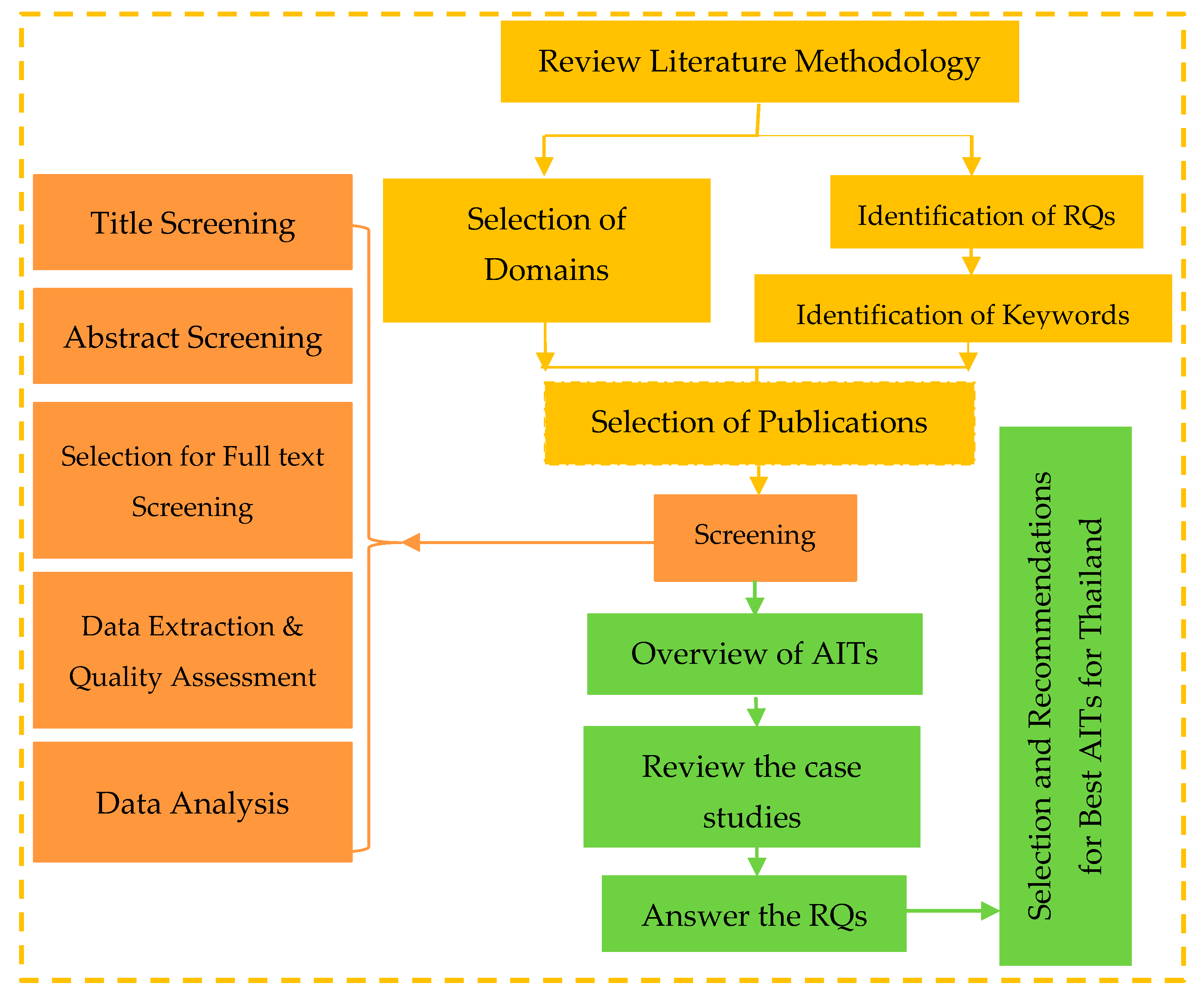
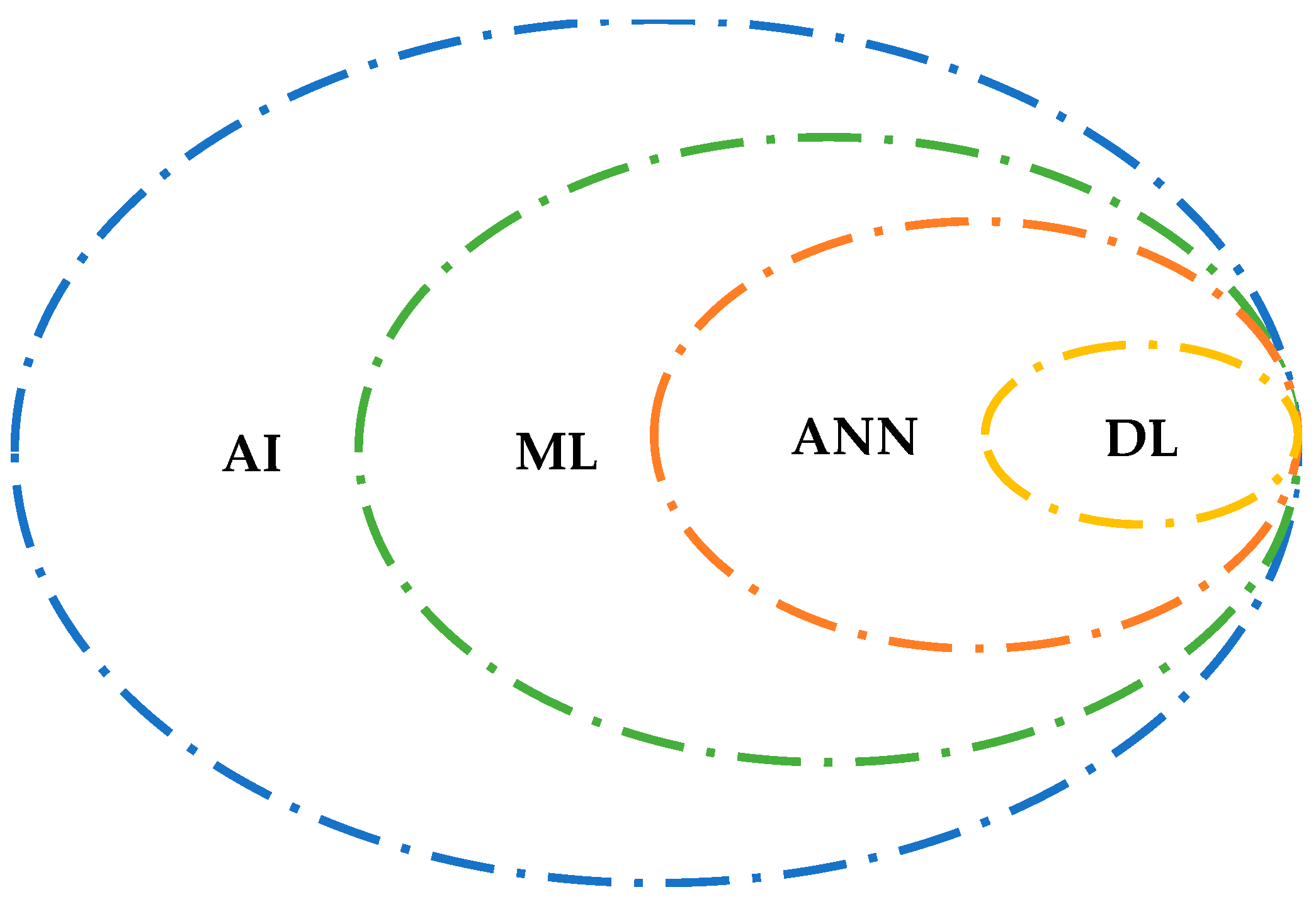
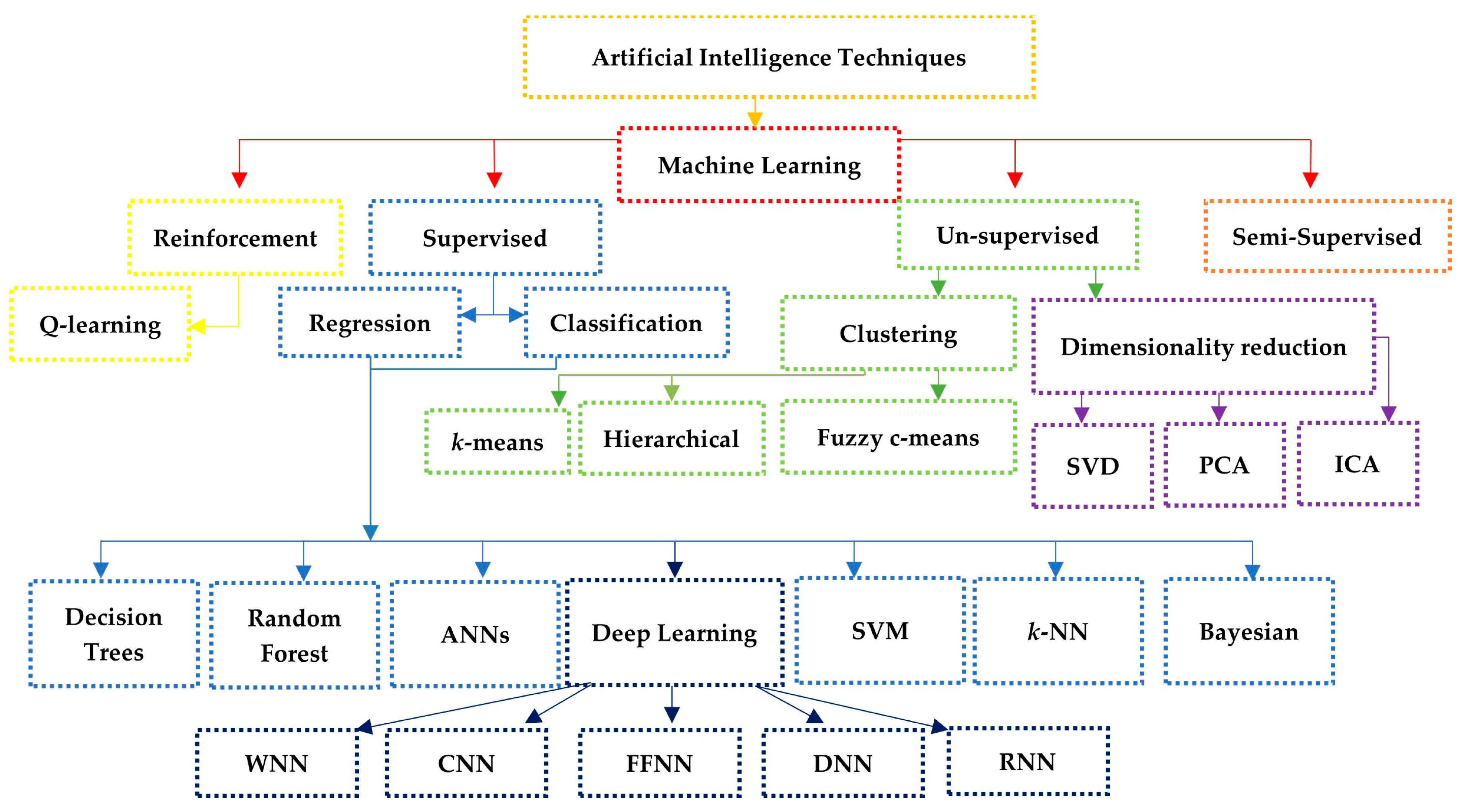
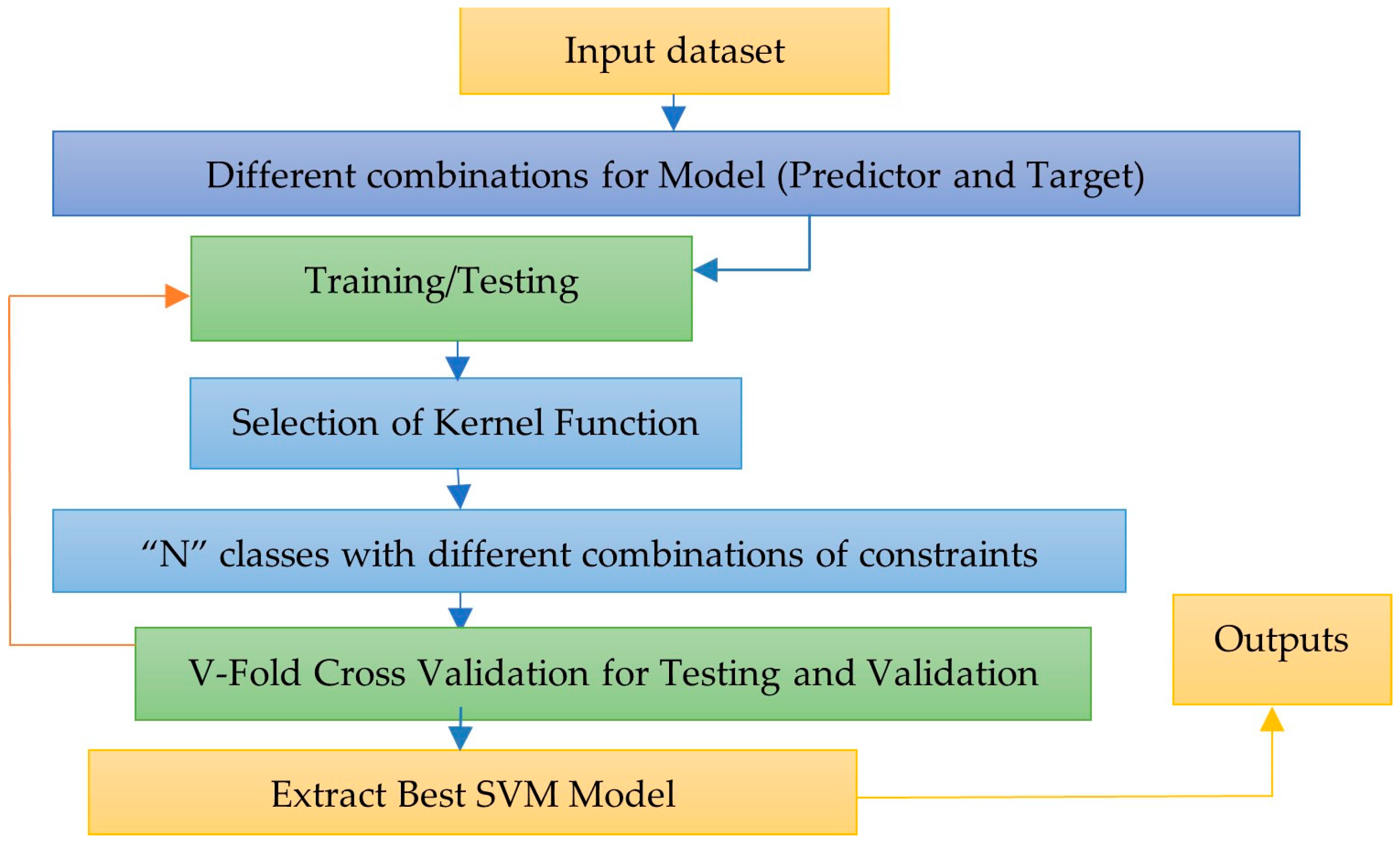
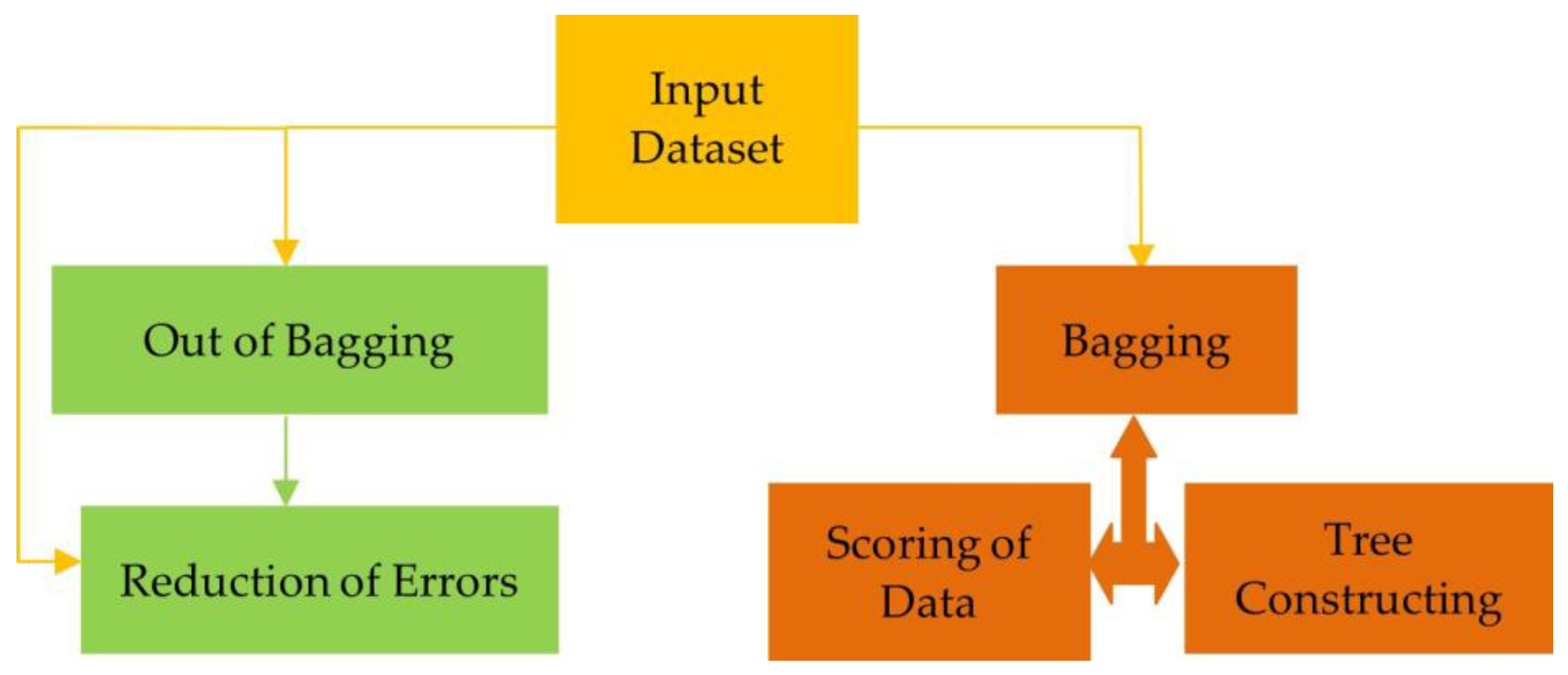
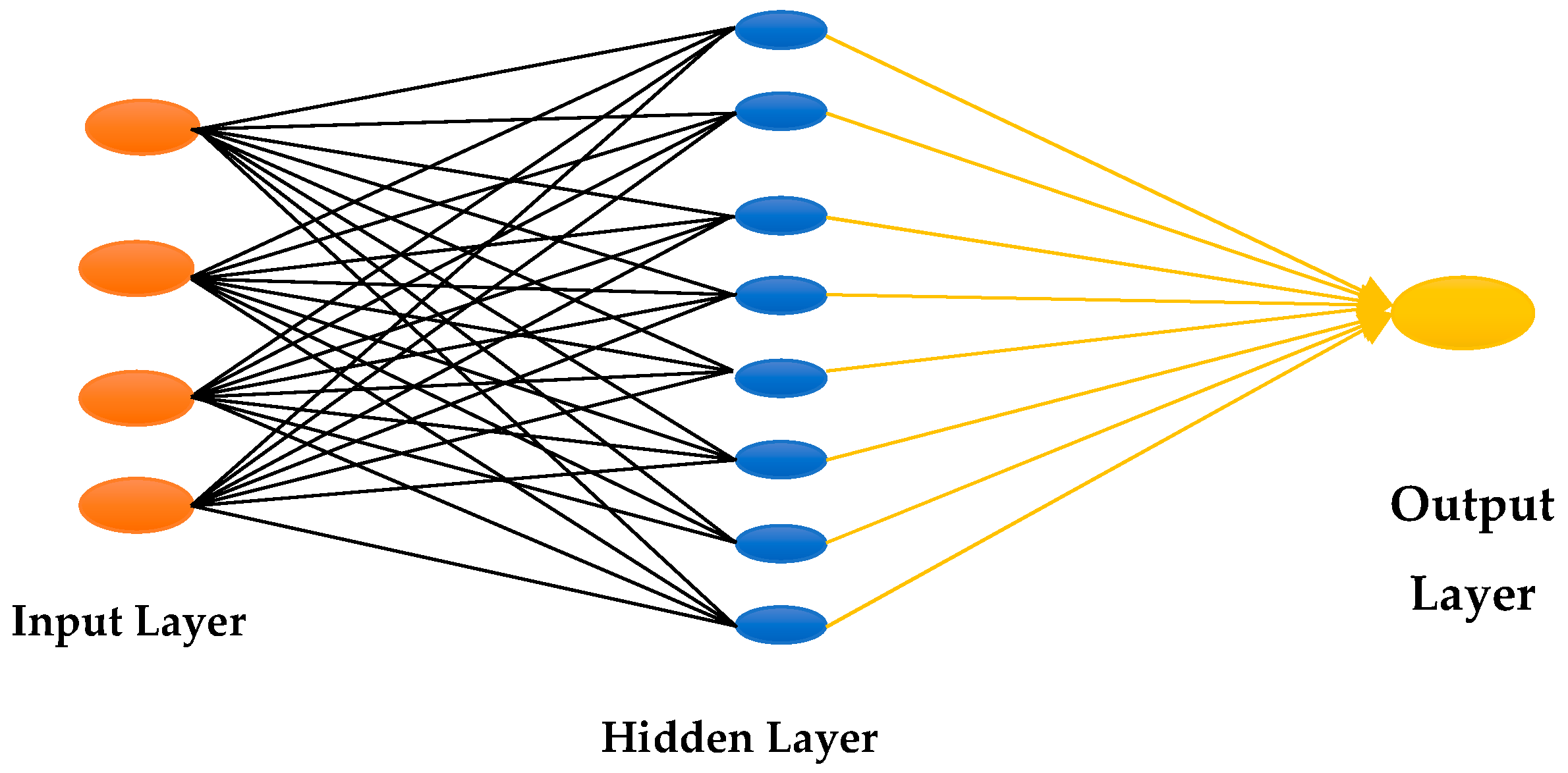

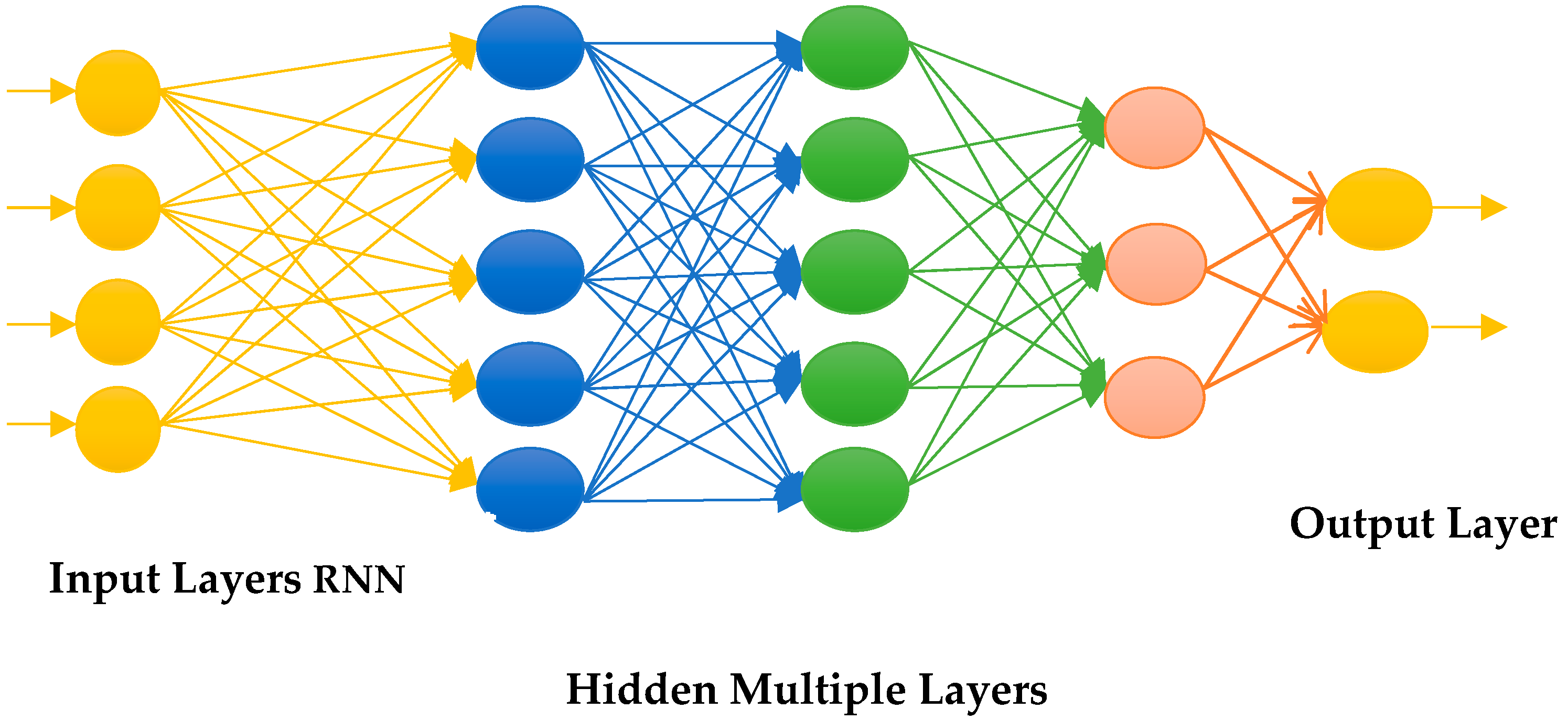

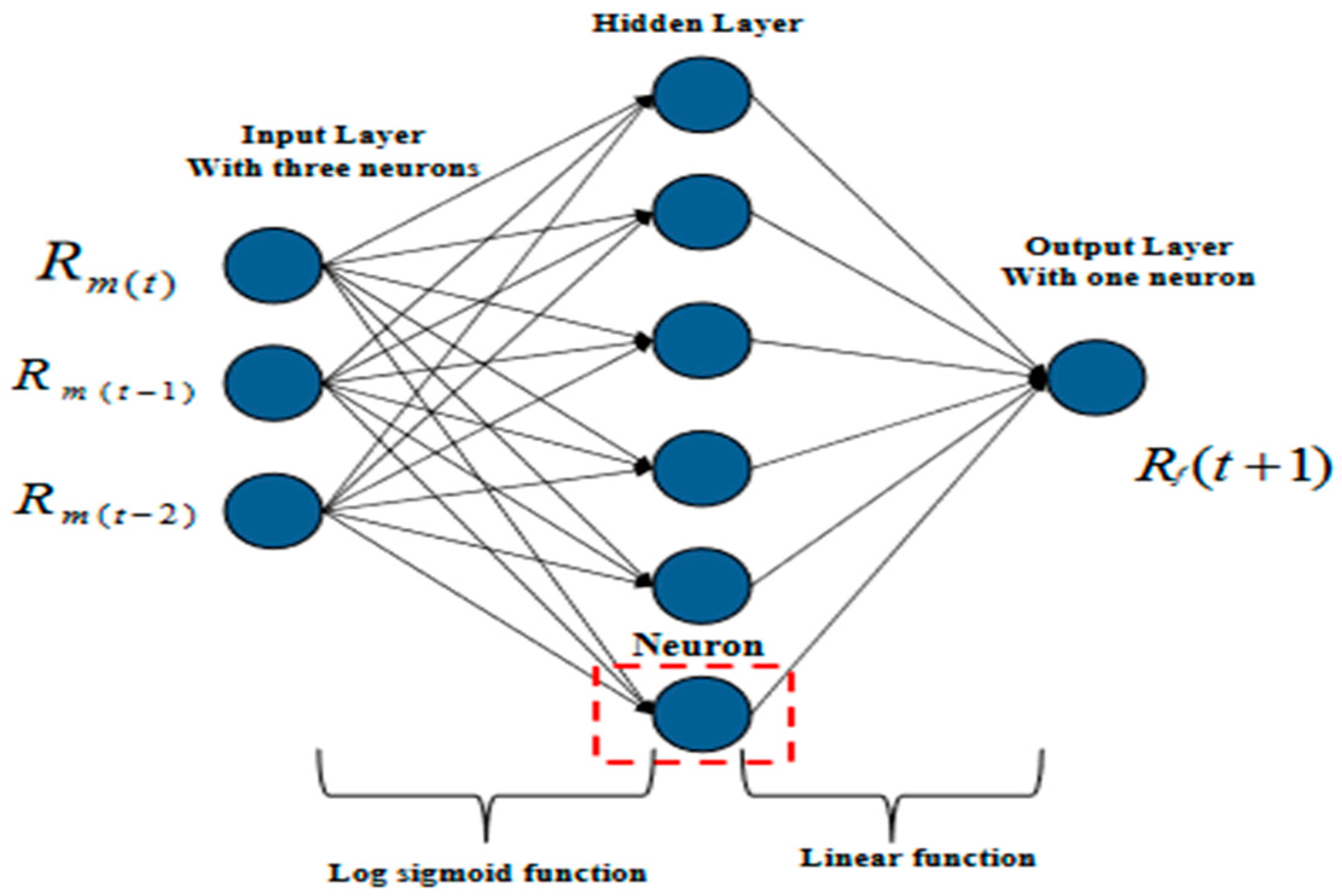
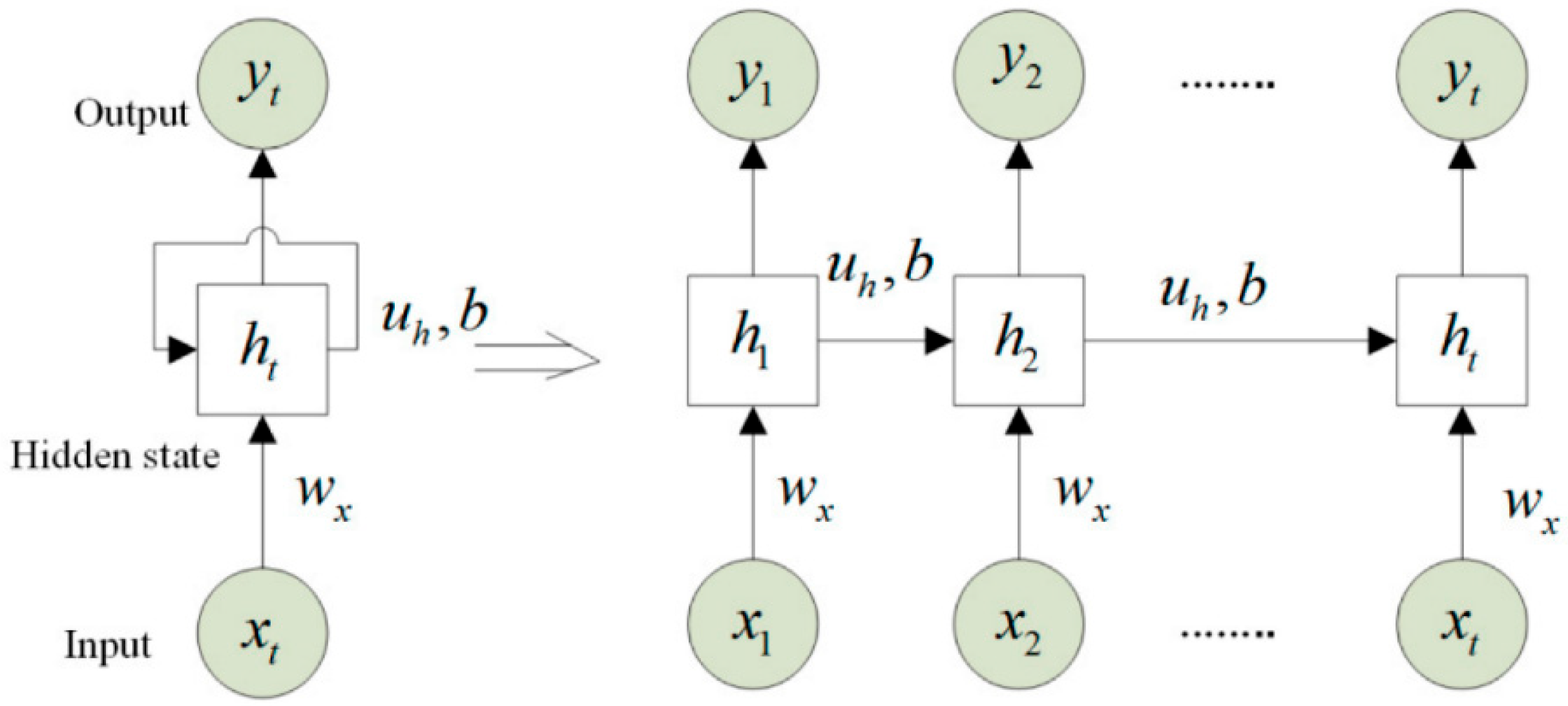
| Duration | Methodology | Input Data | |
|---|---|---|---|
| Before 2000 | 1900–1940 | Surface measurements Graphs and maps for estimating pressure contours | The correlation coefficients method Frontal evaluation Multiple regression solutions |
| 1941–2000 | Application of aircraft to acquire meteorological data in real-time. Popularization of radar and satellite observations Utilization of marine surface temperature and average sea level pressure Statistical information on zonal or meridional winds | Upper-level waves/air were correlated with surface pressure patterns. From 1981 to 1990, the focus was on stochastic methods for long-range forecasting. Power regression models NWP models | |
| After 2000 | 2000–2017 | Ground-based/weather satellites Large-scale radar network deployment | Meteorological development Utilization of high-speed computing facilities rainfall forecast through Radar Introduction of ML and DL models |
| Current | 2017–2022 | Work on efficient and quick algorithms The big data and IoT era for rainfall prediction Examined the impact of rainfall on numerous meteorological variables. Efforts to enhance forecast precision | Emphasis on data collection with a substantial spatial and temporal resolution The wholly wireless and automatic data collection system Advancement in radar data |
| AITs | Advantages | Disadvantages | Reference | |
|---|---|---|---|---|
| Machine Learning | Support Vector Machines (SVMs) |
|
| [35] |
| Decision trees (DTs) |
|
| [39] | |
| Random Forest (RF) |
|
| [44] | |
| Artificial Neural Networks (ANNs) |
|
| [48] | |
| K-Nearest Neighbors (KNNs) |
|
| [52] | |
| Bayesian Method |
|
| [56] | |
| Deep Learning | Convolutional Neural Networks (CNNs) |
|
| [61] |
| Feed-forward Neural Networks (FFNNs) |
|
| [66] | |
| Recurrent Neural Networks (RNNs) |
|
| [67] | |
| Deep Neural Networks (DNNs) |
|
| [70] | |
| Wavelet Neural Networks (WNNs) |
|
| [73,77] | |
Disclaimer/Publisher’s Note: The statements, opinions and data contained in all publications are solely those of the individual author(s) and contributor(s) and not of MDPI and/or the editor(s). MDPI and/or the editor(s) disclaim responsibility for any injury to people or property resulting from any ideas, methods, instructions or products referred to in the content. |
© 2023 by the authors. Licensee MDPI, Basel, Switzerland. This article is an open access article distributed under the terms and conditions of the Creative Commons Attribution (CC BY) license (https://creativecommons.org/licenses/by/4.0/).
Share and Cite
Waqas, M.; Humphries, U.W.; Wangwongchai, A.; Dechpichai, P.; Ahmad, S. Potential of Artificial Intelligence-Based Techniques for Rainfall Forecasting in Thailand: A Comprehensive Review. Water 2023, 15, 2979. https://doi.org/10.3390/w15162979
Waqas M, Humphries UW, Wangwongchai A, Dechpichai P, Ahmad S. Potential of Artificial Intelligence-Based Techniques for Rainfall Forecasting in Thailand: A Comprehensive Review. Water. 2023; 15(16):2979. https://doi.org/10.3390/w15162979
Chicago/Turabian StyleWaqas, Muhammad, Usa Wannasingha Humphries, Angkool Wangwongchai, Porntip Dechpichai, and Shakeel Ahmad. 2023. "Potential of Artificial Intelligence-Based Techniques for Rainfall Forecasting in Thailand: A Comprehensive Review" Water 15, no. 16: 2979. https://doi.org/10.3390/w15162979
APA StyleWaqas, M., Humphries, U. W., Wangwongchai, A., Dechpichai, P., & Ahmad, S. (2023). Potential of Artificial Intelligence-Based Techniques for Rainfall Forecasting in Thailand: A Comprehensive Review. Water, 15(16), 2979. https://doi.org/10.3390/w15162979








